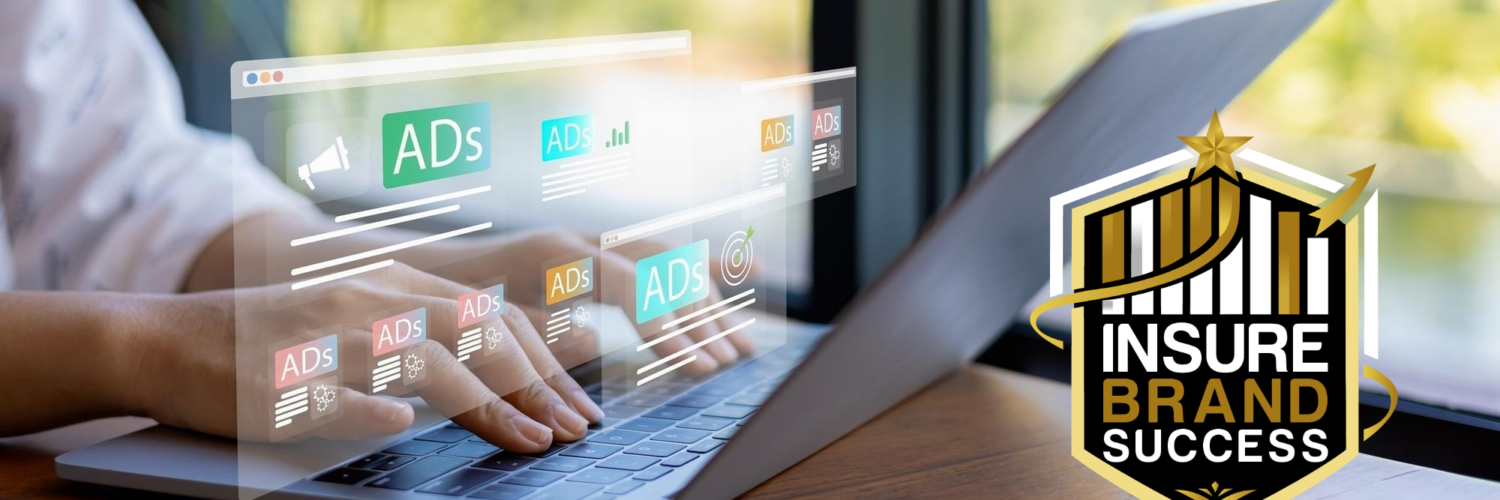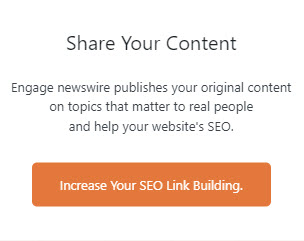Why Paid Advertising Matters in Insurance Marketing
Insurance agencies operate in one of the most competitive digital landscapes. With thousands of providers vying for visibility, relying solely on organic reach often limits growth opportunities. That’s where paid advertising becomes indispensable. By strategically allocating budget to platforms like Google AdWords (now Google Ads), agencies can drastically improve their visibility among high-intent prospects, those actively searching for insurance-related solutions.
Today’s consumers don’t scroll endlessly when they need coverage; they search with intent. Whether it’s a phrase like “auto insurance quote” or “best home insurance near me,” these search terms signal that a user is ready to evaluate options, compare providers, and potentially make a purchase decision. AdWords gives insurance marketers the power to place their agency directly in front of these motivated users at the exact moment they are seeking help.
Unlike traditional outbound efforts, radio, billboards, or direct mail/paid advertising is laser-focused. It targets specific demographics, zip codes, devices, and even times of day, ensuring that every dollar spent is going toward connecting with a relevant audience. This is particularly important in insurance marketing, where trust and timing are everything.
Moreover, according to the Small Business Administration, digital advertising offers measurable ROI, allowing businesses to track performance in real-time. That level of transparency and optimization potential is unmatched by most offline channels. For insurance agencies, this makes AdWords not only a smart strategy but also one of the most cost-effective ways to acquire qualified leads and grow a book of business in an increasingly saturated market.
From click-through rates to conversion metrics, every element of a paid advertising campaign can be refined to maximize impact. Agencies can test ad copy, adjust bidding strategies, and analyze keyword performance all with the goal of improving efficiency and lowering acquisition costs. In this context, Google AdWords (now Google Ads) stands out as an essential tool for driving sustained growth and outpacing competitors.
How AdWords Works for Insurance Agencies
AdWords operates on a pay-per-click (PPC) model, where insurance agencies are charged only when someone actually clicks on their ad. This ensures that marketing budgets are spent efficiently, targeting users who demonstrate real interest. Rather than paying for impressions or broad exposure, agencies invest in actual engagement each click representing a potential client.
The platform runs on a real-time auction-based system. Every time someone types a search query like “affordable renters insurance” or “car insurance for young drivers”AdWords determines which ads appear based on a combination of three key factors:
- Keyword relevance: How closely the selected keywords match the user’s query.
- Bid amount: How much the agency is willing to pay for each click.
- Quality Score: Google’s assessment of the ad’s relevance, expected click-through rate, and landing page experience.
For insurance professionals, success with AdWords requires more than just spending money. It demands strategic optimization, choosing high-intent keywords, writing compelling ad copy, setting appropriate bids, and designing landing pages that convert. Agencies must also consider negative keywords to avoid irrelevant traffic, utilize ad extensions to enhance visibility, and test variations to improve results over time.
The advantage for insurance agencies is clear: AdWords provides the ability to target by geography, time of day, device, and even user behavior. For example, an agency in Miami can show ads only to users within a 10-mile radius searching for “homeowners insurance,” ensuring hyper-local relevance.
With continuous monitoring and adjustments, AdWords becomes a dynamic engine for lead generation, powerful, precise, and perfectly suited for the high-stakes, high-intent world of insurance marketing.

Targeting the Right Keywords
At the heart of every successful AdWords campaign lies one essential element: keyword targeting. For insurance agencies, selecting the right search terms is not just about traffic, it’s about attracting the right kind of traffic. That’s why every campaign must begin with thorough keyword research, focused on identifying terms that signal strong buying intent.
High-intent search queries such as “affordable life insurance” or “business liability coverage”indicate that the user is actively evaluating providers, comparing policies, or preparing to make a purchase decision. These are precisely the moments when an agency’s ad must appear. Bidding on these keywords positions the agency in front of motivated prospects, significantly increasing the likelihood of conversion.
To effectively target these valuable queries, agencies should:
- Use tools like Google Keyword Planner, SEMrush, or Ahrefs to uncover trending and long-tail insurance keywords.
- Analyze competitor ads to identify gaps and opportunities.
- Leverage negative keywords to filter out irrelevant clicks (e.g., “free,” “jobs,” or “courses”).
But keyword selection should never happen in a vacuum. Agencies must align their AdWords campaigns with broader insurance marketing strategies considering the target audience’s pain points, demographics, and purchasing behaviors. For example:
- A campaign targeting millennials might focus on keywords like “cheap term life insurance for young adults.”
- A commercial agency may prioritize terms like “general liability insurance for contractors” or “commercial auto insurance quote.”
By integrating keyword strategy with content, messaging, and landing page design, insurance agencies can create highly relevant ad experiences that resonate with the specific needs of their audience. This not only improves Quality Scores but also drives better results with less wasted spend.
Ultimately, precision keyword targeting ensures that every dollar spent on AdWords contributes to a clear objective: connecting with people who are ready to convert.
Crafting Compelling Ad Copy
Selecting the right keywords is just the beginning. The next and equally crucial step in any successful AdWords campaign is crafting compelling ad copy that connects with the audience in a meaningful way. In the highly competitive world of insurance, where trust is paramount and attention spans are short, your messaging must cut through the noise instantly.
Insurance prospects aren’t looking for fluff. They want clarity, trust, and value and your ad copy needs to deliver on all three. That means ditching generic slogans in favor of direct, benefit-driven language that addresses the user’s intent.
Effective ads often include phrases like:
- “Instant quotes” – Emphasizes speed and convenience, a key selling point for users who want quick comparisons.
- “Custom coverage” – Signals flexibility and personalization, especially important for niche policies or unique client needs.
- “Local support” – Builds trust by positioning the agency as a nearby, accessible partner rather than a faceless corporation.
These phrases work because they mirror what searchers are looking for when typing queries like “affordable life insurance” or “business liability coverage.” Highlighting tangible benefits helps capture attention and drive clicks.
Here are a few best practices for writing high-performing AdWords copy for insurance agencies:
- Use dynamic keyword insertion to match the user’s search phrase in real-time.
- Include a clear CTA such as “Get a Quote,” “Compare Rates,” or “Start Your Policy Today.”
- Address objections directly such as “No medical exam required” or “Licensed in all 50 states.”
- Add urgency with time-sensitive language like “Limited-Time Offer” or “Get Covered Today.”
Strong ad copy is only part of the equation. To truly convert, it must be paired with well-designed landing pages that continue the conversation seamlessly. That means consistent messaging, a clear headline, user-friendly design, and prominent CTAs. When ad copy and landing page content are aligned, conversion rates improve and cost-per-click goes down thanks to higher Quality Scores.
In short, writing a compelling ad copy isn’t just about clever words, it’s about speaking the language of your prospects, solving their pain points, and building trust from the very first impression.
Optimizing Landing Pages
A well-targeted AdWords campaign may drive the right traffic but without a high-performing destination, that traffic won’t convert. That’s why paid ads are only as effective as the pages they direct traffic to. For insurance agencies, investing in optimized landing pages is essential to turn interest into action.
High-converting landing pages don’t just look good, they’re engineered to support specific user behavior. Every element, from the headline to the form fields, must guide the visitor toward a conversion goal. That’s why smart agencies investing in web design for insurance agencies treat landing pages not just as digital brochures, but as performance-driven assets.
Key features of effective insurance landing pages include:
- Fast load speeds: Every second counts. According to Google, bounce rates increase dramatically if a page takes more than 3 seconds to load. Optimizing for speed keeps users engaged and lowers abandonment rates.
- Mobile responsiveness: With a significant portion of insurance searches happening on mobile devices, responsive design is non-negotiable. Pages must function flawlessly on all screen sizes, ensuring form fields, buttons, and content are easy to navigate.
- Clear calls-to-action: Visitors must immediately understand what to do next. Prominent quote request forms, “Get Started” buttons, or contact links guide users through the conversion process.
Beyond these fundamentals, strong insurance landing pages also:
- Mirror the ad copy: Consistency between the ad and the page reinforces the message and increases trust.
- Minimize distractions: Focused design with limited navigation prevents users from clicking away or getting lost.
- Showcase trust signals: Include testimonials, industry certifications, or review ratings to reinforce credibility.
When all these elements are in place, landing pages not only convert better but also improve Quality Scores within AdWords. Higher scores mean lower cost-per-click and better ad placement amplifying the impact of every marketing dollar.
Ultimately, landing page optimization is where the promise of your ad is fulfilled. It’s where casual clicks become real leads and where effective web design for insurance agencies proves its value in measurable ways.
Integrating AdWords into a Holistic Marketing Strategy
While AdWords can be a powerful lead generation tool on its own, the most successful insurance agencies understand that paid ads work best when integrated into a larger, strategic marketing ecosystem. Rather than treating AdWords as a standalone tactic, high-performing agencies incorporate it into a comprehensive growth plan, one that aligns paid campaigns with organic visibility, relationship nurturing, and brand reinforcement across channels.
SEO and Paid Ads Synergy
The relationship between SEO and PPC is not competitive, it’s complementary. While PPC campaigns like those run through AdWords deliver immediate results, SEO is the long game, focused on building lasting authority and organic visibility. By combining both, agencies can dominate the search engine results page (SERP) from top to bottom.
For example:
- A user searching for “affordable life insurance” might see both a paid ad and an organic blog post from the same agency. This dual presence boosts credibility and click-through rates.
- Long-tail keywords used in AdWords can inform content creation for SEO for insurance brokers, targeting similar intent over time.
- Investing in insurance SEO services ensures that content is optimized for visibility while AdWords captures the immediate high-intent traffic.
This dual-channel approach means agencies aren’t just paying for every lead, they’re also investing in visibility that grows over time and lowers customer acquisition costs.
Email Marketing Integration
Driving clicks is just the first step. Once AdWords campaigns generate leads, the key to turning those leads into policyholders lies in smart follow-up. That’s where insurance email marketing comes into play.
Through automated workflows, agencies can:
- Send a welcome email immediately after a quote request.
- Deliver tailored content based on user interest (e.g., auto vs. homeowners insurance).
- Share newsletters with tips, industry updates, and cross-sell opportunities.
Personalized follow-ups build trust and keep the agency top of mind during the decision-making process. Over time, a well-structured email sequence can dramatically increase the likelihood of conversion even if the initial interaction started with a simple click on a paid ad.
Social Media Amplification
The user journey rarely ends after one click or one ad. That’s why pairing AdWords with a robust social media strategy helps maintain visibility and strengthen messaging across platforms. Retargeting plays a central role here.
By placing tracking pixels on landing pages, agencies can:
- Retarget website visitors with display or video ads on Facebook, Instagram, or LinkedIn.
- Create custom audiences based on interaction level (e.g., visited quote page but didn’t complete the form).
- Reinforce brand identity with educational content, testimonials, and social proof.
This cross-channel engagement keeps leads warm, builds brand familiarity, and shortens the path to conversion. And when social media efforts are aligned with the same messaging used in AdWords campaigns, the result is a seamless, omnipresent brand experience.
Measuring Success: Key Metrics for AdWords Campaigns
Tracking performance is critical for optimizing ad spend. Agencies must focus on key metrics that directly reflect campaign effectiveness.
Click-Through Rate (CTR)
CTR measures how often users click on ads after seeing them. A high CTR indicates relevant ad copy and strong keyword targeting. Consistently monitoring CTR helps agencies refine their messaging for better performance.
Conversion Rate
Ultimately, the goal is not just clicks but conversions. Insurance agencies should track how many ad-driven visitors complete actions such as requesting quotes or scheduling consultations. Aligning campaigns with client acquisition and retention programs ensures ads are tied to tangible business outcomes.
Cost Per Acquisition (CPA)
CPA evaluates the cost of acquiring each new client. Balancing ad spend with conversion volume is critical for ensuring campaigns remain profitable. Agencies that track CPA closely can adjust bids and targeting to improve efficiency.
Overcoming Challenges in AdWords for Insurance Agencies
Despite the immense potential of AdWords in driving leads and conversions, insurance agencies must navigate several challenges unique to their industry. From sky-high cost-per-click (CPC) rates to strict compliance requirements, running successful campaigns requires more than just a budget; it demands strategy, vigilance, and adaptability.
High Competition and CPC Rates
In the realm of paid advertising, insurance consistently ranks among the most competitive sectors. This intense competition drives up CPC rates, with keywords like “auto insurance quote” or “life insurance policy” frequently costing agencies upwards of $50 per click in some markets. For smaller agencies or those entering saturated regions, this creates a steep barrier to entry.
To overcome this, agencies must focus on:
- Strategic keyword targeting: Instead of bidding on broad, high-cost terms, agencies can pursue long-tail or niche keywords that attract qualified traffic with lower competition.
- Local campaign optimization: Geo-targeted campaigns reduce wasted spend by showing ads only to users in serviceable areas.
- Quality Score improvement: Google rewards relevance. Well-written ad copy, optimized landing pages, and high expected click-through rates lead to better ad placements at lower costs.
Through continuous refinement, agencies can remain competitive on AdWords without overextending their budget.
Compliance and Transparency
The insurance industry is heavily regulated, and this extends to digital advertising. Agencies must ensure that both ad copy and landing pages meet the legal and ethical standards set by regulatory bodies such as the National Association of Insurance Commissioners (NAIC) and relevant state departments.
Common pitfalls include:
- Overpromising benefits: Claims like “guaranteed savings” or “lowest rates” may violate advertising standards.
- Lack of disclosures: Ads must clearly state limitations, terms, and conditions where applicable.
- Inconsistent messaging: Mismatched copy between ads and landing pages can trigger disapproval from Google and scrutiny from regulators.
Maintaining transparency and staying informed about advertising regulations not only protects against fines but also builds credibility with users.
Balancing Short-Term and Long-Term Goals
One of the biggest strategic missteps agencies make is over-relying on AdWords for lead generation. While it excels at driving immediate traffic, it’s a short-term tactic by nature. Costs can escalate quickly, and lead quality can vary depending on targeting.
To create a sustainable growth model, agencies should pair PPC with digital marketing for insurance agencies combining the immediacy of paid advertising with the compounding benefits of SEO, content marketing, and email nurturing. This integrated approach helps maintain visibility across the entire customer journey.
For example:
- Use AdWords to capture high-intent leads today.
- Invest in blog content targeting related search terms to grow organic reach.
- Build remarketing lists from PPC traffic and convert users later via email or display ads.
By aligning short-term wins with long-term strategies, agencies create a marketing ecosystem that supports consistent lead generation, cost control, and brand authority.

Emerging Trends in Paid Advertising for Insurance Agencies
The digital advertising landscape continues to evolve rapidly, and insurance agencies that fail to adapt risk falling behind. As user behavior shifts and platforms become more sophisticated, staying ahead means embracing new tools, tactics, and formats that go beyond traditional keyword bidding. Here are three major trends reshaping how paid advertisingespecially through AdWordsdelivers results for modern insurance marketers.
AI-Powered Campaign Optimization
One of the most transformative changes in paid advertising is the rise of AI-powered campaign optimization. Platforms like AdWords now incorporate machine learning tools to automatically enhance key elements of a campaign. This includes:
- Smart bidding strategies that adjust bids in real time based on conversion likelihood.
- Predictive audience targeting that uses behavior patterns to identify high-intent prospects.
- Performance forecasting that helps agencies anticipate ROI and fine-tune budgets.
For insurance agencies, this automation means less time spent micromanaging campaigns and more focus on strategy. Leveraging AI doesn’t eliminate the need for human oversight, but it empowers marketers to achieve better outcomes faster and more consistently.
Localized Targeting
Geo-targeting has become essential in AdWords, especially in an industry like insurance, where local context and compliance are critical. With clients often looking for policies that align with local regulations, having ads that speak directly to their geographic area can dramatically improve relevance and click-through rates.
For example, an agency offering “flood insurance” in Houston can craft hyper-local ad copy, choose zip-code-specific targeting, and even schedule ads during peak local activity hours. These tactics not only drive qualified traffic but also enhance trust by demonstrating local expertise.
Additionally, localized targeting supports brand-building within communities. By customizing campaigns for individual cities or neighborhoods, agencies create a stronger connection with prospects, which is crucial in a trust-driven industry like insurance.
Video and Display Ads
While text-based search ads remain foundational, video and display ads are gaining momentum as compelling ways to engage users who aren’t actively searching but are still relevant prospects. These formats allow insurance agencies to move beyond transactional advertising and into the realm of storytelling and education.
- Video ads can include short explainers about policy options, client testimonials, or animated guides to simplify complex topics like “umbrella coverage” or “deductibles.”
- Display ads, on the other hand, serve as visually engaging reminders that keep your brand top-of-mind through retargeting across websites and apps.
Both formats help build brand awareness and credibility before the prospect even conducts a keyword search. When they do eventually search for terms like “auto insurance quote” or “best home insurance near me,” your agency is already a familiar and trusted presence, giving you a clear competitive advantage on AdWords.
Future Outlook: AdWords as a Growth Engine for Insurance Agencies
Paid advertising will remain a cornerstone of insurance marketing, but success depends on strategic execution. Agencies that combine targeted AdWords campaigns with comprehensive SEO solutions for insurance, email marketing, and multi-channel engagement will outperform competitors relying on siloed tactics.
As the Insurance Information Institute notes, consumer behavior continues to shift toward digital-first research and decision-making. Insurance agencies that embrace innovative paid advertising strategies while maintaining compliance and trust will position themselves as leaders in a competitive marketplace.





